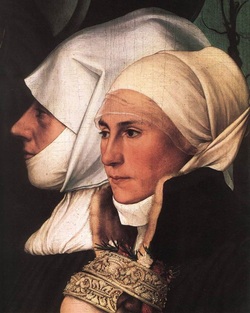
Hans Holbein is best known for his portraits of Henry VIII and his English court. Looking for work as a result of the religious turmoil dividing Europe in the wake of the Reformation, he got to King Henry - via the Humanist circles of Thomas More - on the recommendation of the philosopher Erasmus, and the rest is literally history. Lucky Henry to have Holbein as his official court painter as he demolished England's Catholic traditions and built the Anglican Church - and lucky us, to have so many beautiful Holbein portraits of contemporary English court and society! The Darmstadt Madonna was painted in 1526, the same year Holbein left for England. It is a Catholic painting, a remnant of a German mindset that was eroding under the pressures of the Reformation; the wealthy banker/soldier Jakob Meyer von Hasen, kneeling at the side of the Madonna and Child, is a staunch opponent of the new belief and likely needed the divine protection they represent. Two boys, a child and an infant play as if unconcerned but it is thought that at least one of them had already died. On the other side are two of von Hasen's wives, one deceased, and his living daughter, who bows meekly as she fingers her long coral rosary. Holbein's landmark style is a vivid amalgam of new and old, North and South - the incredible detail and clarity of Northern Europe, and the deep space and robust forms that show the influence of the Italian Renaissance. Holbein would be a supreme artist at any moment in time, but this masterpiece is the perfect testament to a singular man's extraordinary skill as well as a clear, articulate document marking where humanity was at a particularly significant place and time.
Click on the images below to see the painting and details and read the captions, along with other paintings and portraits by Holbein.
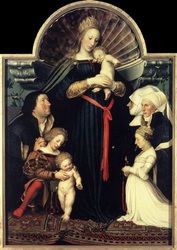
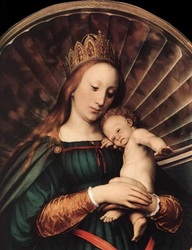
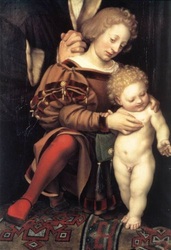
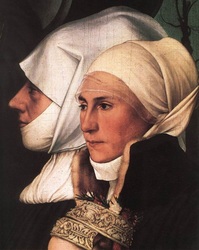
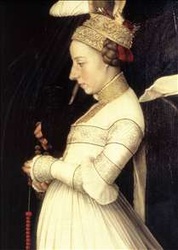
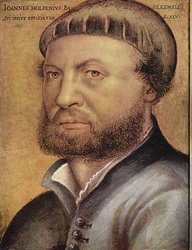
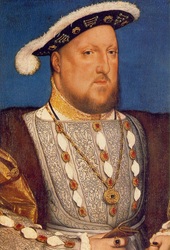
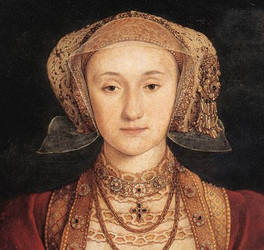
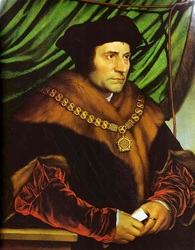


 RSS Feed
RSS Feed